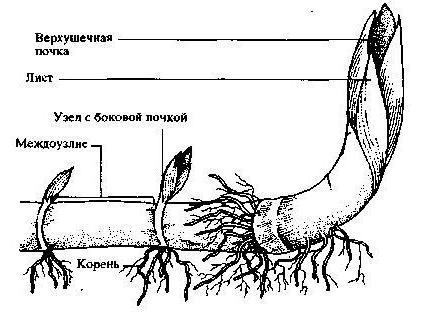In our body, skin having a total surface area of 1.5 m2 up to 2,5 m2, is functionally connected with internal organs andreflects their condition both in norm and in pathology. Having a complex three-layered structure, it contains nerve endings, so-called skin receptors that perceive irritations from the external environment. In this article, we will try to answer a few questions. What receptors are located in the skin? What is their structure and functions? How is the interaction of the integument of the human body and the conditions of the surrounding nature ensured?

What receptors are located in the skin
Anatomy and physiology of a person isstudying not only the basic systems of the body, but also what receptors are located in the skin. Biology (Grade 8) explains the morphofunctional features of the tactile sensory system, based on the specific structure and functions of the various types of skin receptors involved in it.
There are three types of receptors in the skin:mechanoreceptors, thermoreceptors and nociceptors (painful). The latter are located in most cases in the epidermis - the outer layer of the skin, consisting of epithelium, located in several rows. Their upper part keratinizes, slushes and replaces at the expense of the lower layers. In humans, the epidermis is almost completely renewed within a month.
The first two types are mechanoreceptors andthermoreceptors - are found mainly in the dermis or skin proper, in the layer of connective tissue, in which are all its structural elements, including blood and lymph vessels, hair bags and glands.

Receptor function of the skin
Human skin performs several important functions,one of which is the receptor. It is explained by the fact that the covers of the body are a receptor field, which provides the central nervous system with information about changes in the skin itself, as well as the nature of the stimuli. Active skin points are associated with certain areas of the brain, and through them with the musculoskeletal system and internal organs.
Receptors of the skin are nothing more than,as the peripheral part of the musculoskeletal analyzer, which also includes nerves carrying excitation from the receptors and brain centers located in its trunk portion. As it was said before, the receptors of the skin analyzer are in the epidermis and the skin proper. Their structure and functions are not identical.
For example, tactile receptors - bodiesMeissner, are markers that determine the speed of contact and are located in the epidermis, and Paccini's bodies, which are deep in the dermis, are responsible for changing the acceleration of tactile stimuli. The nature of the sensations depends not only on what receptors in the skin perceive the action of the external environment, but also on the frequency of the stimulus. If it is unchanged for a long time, there is a feeling of pressure, with a short-term action - touch, and with a high rate of change in the strength of the stimulus - a sense of vibration.

The smallest sensitivity threshold is characteristic forskin receptors located on the tip of the tongue and lips, higher - on the fingertips, palms, inner elbows, and the skin of the abdomen, feet and back has the highest threshold of sensitivity.
Features of temperature receptors
Temperature receptors control normallevel of metabolic reactions of homeostasis. They are located in the walls of the arteries and provide thermoregulation - balancing the heat transfer processes of homeothermic organisms that have a constant body temperature. Thus, the adaptation level of a living organism depends on which receptors are located in the skin and how quickly they signal changes in the environment.
Specificity of nocireceptors
Изучение вопроса, какие рецепторы располагаются в skin will be incomplete if we do not consider the structural features of pain receptors. Contrary to the pharmaceutical advertising, which helpfully offers to get rid of the pain once and for all, we note that it is pain that is the body’s defensive reaction, signaling to it the potential danger. Nocireceptors have the form of single branched nerve endings that perceive a variety of excessively strong stimuli of heat, pressure, and cold. Their greatest number is on the fingertips, in the periosteum, in the walls of blood vessels, in the arachnoid membrane of the brain.

Pain can be considered as a formtactile perceptions, so it is important not only what receptors are located in the skin, but also how clearly they react to strong stimuli. The feeling of pain itself is regarded as a subjective feeling, which we express when we are in a particular negative psycho-emotional state. It is provoked by the influence of stimuli of a specific sensory modality.
In this article, the features of the structure and functions of the skin receptors were considered.






